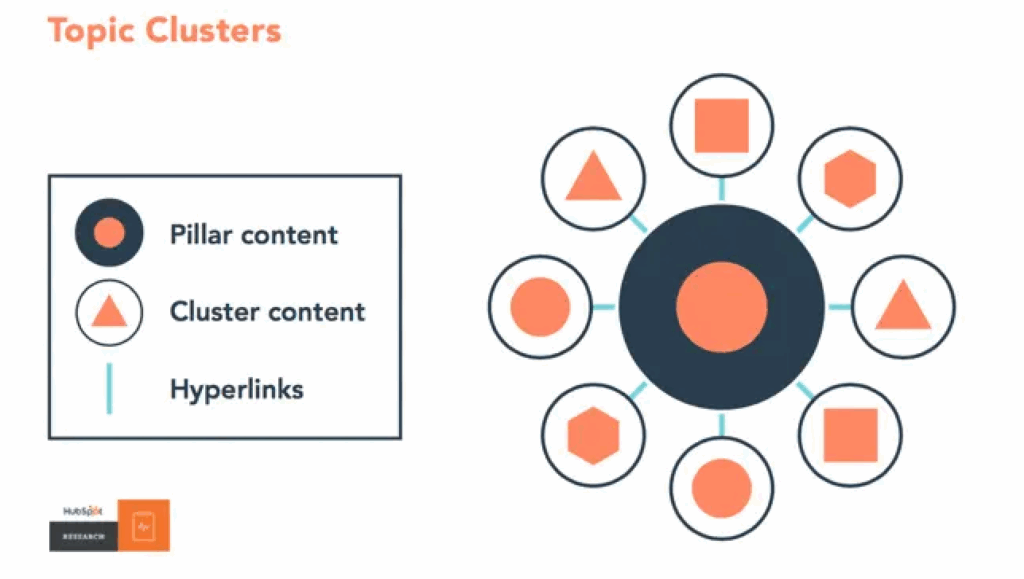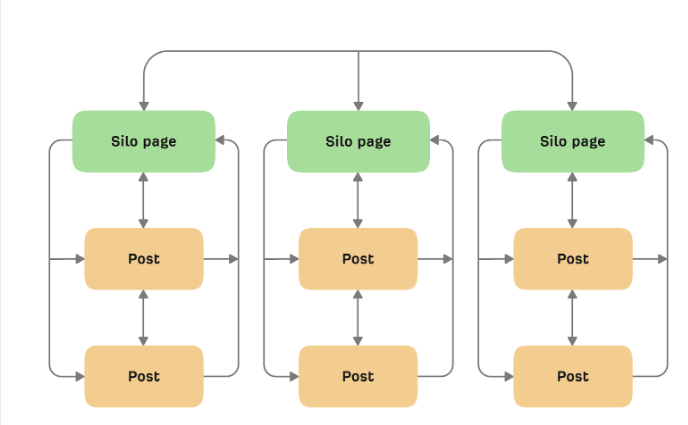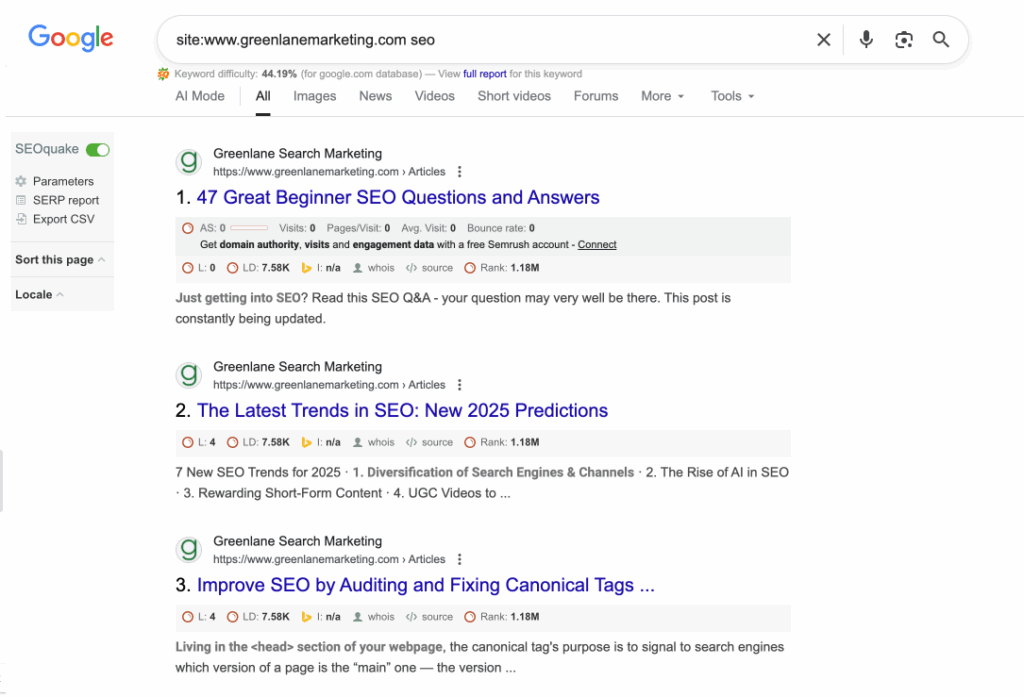Links Aren’t Just For SEO: Advanced Internal Linking Strategies for In-House Teams
You’re busy — I get it.
As an in-house SEO leader or a marketer, you are constantly balancing priorities: delivering tangible results, proving ROI to executives, blah blah blah.
With all your other high SEO priorities, interlinking on webpages can easily be neglected.
It’s often assumed that when someone on your team writes a new webpage, they’re adding links to related content that exists on your site. After all, adding internal (and external) links has been a best practice since the start of search engine optimization.
But You Know What They Say About Assumptions…
It can’t be assumed that hyperlinks were added, because I’ve seen plenty of webpages that have the bare minimum of links. We’re talking maybe a link or two per 500+ word page, or just a “Related Links” module that autopulls articles at the bottom of the page.
Plus, even if there are links on the page, it doesn’t always mean they’re good links, or strategically-selected and helpful links.
To further ramble on: even strategically-chosen links can break. As pages are moved, 404’d, or redirected, dead or misleading redirects can signal to both Google and your customers that your page has been neglected. If your webpages are neglected, what does that say about your products or services?
For SEOs like us, sharpening our interlinking approach isn’t just about fixing broken links — it’s about shaping the way both search engines and users understand our brand or the brands we promote.
That’s why we have to move beyond basic linking best practices and be tactical and consistent in how we use them.
Why Internal Links Still Matter in 2025
As search engines and technology advance, I’ve had some clients ask me if linking still even matters for SEO. After all, can’t Google figure out topical association and make URL fixes on its own by now? Look at Gemini and all the AI wonders it can do!
My answer is, “If only!”
In all seriousness, if this were true, SEOs like you and I would be out of a job… So I’m kind of glad it’s not something that auto-fixes or a robot can do autonomously.
I try to explain to my marketing clients that internal and external linking still matters, but here in the year 2025 (approaching 2026), SEOs need a new way of thinking about their overall linking strategy.
SEO Benefits That Still Remain
Today’s search engine optimization experts often treat internal links primarily as a crawlability tool to help search engines discover new pages and pass on ranking signals. It’s seen as an SEO tactic: full stop. The thinking is: “We add links for Google, because Google prefers to serve pages with other links on them.”
We know the following SEO implications to be true:
- Internal links support E-E-A-T (Expertise, Experience, Authoritativeness, Trustworthiness): Linking to relevant internal and external resources builds credibility and context. Using links to reference reputable external sources shows Google that we are trustworthy.
- Internal links help to demonstrate topical authority: Clusters of well-connected content signal to Google that your brand is a leader in your niche. This demonstrates that your site is a resource for more than just one thing about a topic.
- Internal links improve engagement metrics: A strong linking structure keeps users on-site longer, which, in turn, tells search engines your content is helpful and worth ranking higher. When users click on internal links to other content, such as a video or another blog post, it increases the overall time on page, which is an important SEO metric.
That is all still true, but today (and arguably always) the bar is/has been much higher than pleasing Google and search engines alone.
User Experience (UX) Benefits That Need Reaffirming
Modern-day SEOs have forgotten the initial intention of adding hyperlinks to a page. Internal links are primarily added to help the user learn more. Linking is all about continuing and aiding in the “buyer’s journey” — with the SEO benefits being a secondary consideration.
We are helping the webpage user learn about things that would take too long to explain on the existing page or linking to reputable external sources to prove what we are saying is legitimate and trustworthy.
Strategic Shifts: From Linking for “Link’s Sake” to User/Customer Journeys
The primary point of this blog is to remind SEOs that linking for “link’s sake” is not the mentality that will bring in loyal customers or do wonders to improve our organic presence.
Sure, you may be linking, but are your links actually helping your clients or customers?
As an example, I just had a conversation with a client’s YouTube team about adding “Related Video Cards” at the end of their videos. They argued with me that they are, in fact, adding Cards, but they weren’t doing so strategically.
To illustrate, they had a video about “How to Install a Tonneau Cover on a 2023 Ford F-150” and had the Related Videos setting set to autoserve “the most recent uploaded video” on their channel.
Now, if you’re installing something on your Ford truck and your next served video is “Fast Facts About the 2018 Nissan Rogue,” are you sticking around to watch? No. You have an F-150. Why would you care about the Rogue? We’re not even comparing apples or oranges. A truck vs. an SUV driver are completely different buyer or user personas. It’s more like comparing apples to granola bars.
Obviously, this example illustrates links on/to videos instead of webpages, but the concept remains valid: we need to link to things our readers actually care about; things that are relevant to their shopping or learning experience.
Had the client manually added a video about “How to Install” literally anything else for an F-150, I would have given them the thumbs up. Had it been even more strategic, like serving a video comparing different brands of tonneau covers (the original topic, if you recall), I would have offered an enthusiastic, “yes!”
So no, adding links for the sake of having links for SEO is not good enough. It’s not good enough for Google, and it’s certainly not good enough for your shoppers, who will see through your hyperlink fluff.
For in-house SEO directors like you, this means a big reminder that internal linking in 2026 is not just a technical box to check. It’s a strategy for both visibility and user experience.
Thinking of Links As a Part of a Funnel
Let’s get to the actual “advanced strategy” portion.
I’m often shocked to learn that many marketers and SEOs don’t know about the buyer’s journey or marketing/sales funnel stages. I’ll throw around simple acronyms like “MOFU” (short of “middle of the funnel”) and can recognize by their face that they’ve heard of the term but have zero idea what it means.
If you are one of these folks, I’m not here to shame you. I’m here to teach you — and encourage you to learn more outside of this article.
There are typically three stages that marketers consider when creating content to promote their product or service: awareness, consideration, and decision.

Here’s a link to a HubSpot article about the Content Marketing Funnel. I’m frequently linking to HubSpot in this blog because I previously worked for two HubSpot agencies and learned many of my basic content marketing principles through their HubSpot Academy, should you want to dig deeper.
An Example of Using the Content Marketing Funnel
Without getting too off-track from this article’s original point, it’s crucial to understand where your ideal client/customer is in the marketing funnel to know which content to link to that will naturally nurture them through the next step in the funnel.
For example, if you’re having issues with AI producing quality content for your site, you may do the following Google searches in various stages of your problem-solving journey:
- TOFU: Googling the phrase, “AI that doesn’t write garbage content”
- Here, you are starting at the top of the funnel with a high-level search for a solution.
- MOFU: “free AI that I can train”
- Upon looking at AI content-production tools, you realize it may be best to train a specific AI bot on your brand’s materials. You’re still hunting for a solution you can provide yourself and that is free, so you’re doing more rudimentary searching.
- BOFU: “how to make a custom Gem in Gemini”
- Here, you discover you can write a script to give AI exact details on your brand, or attach Brand Guidelines and files for the artificial intelligence to write a level above trashcan.
- Super BOFU: “Gemini Pro subscription”
- Finally, you’ve decided investing some money in a tool is worth it and are looking at plans.
We can tie this back to interlinking on your website by reminding you that before your client or customer buys your product or service, they are thinking in terms of a problem-solving journey. We want to ensure the links on your pages are helping them reach the final conclusion of investing in your brand. So, by interlinking related content on your website at those TOFU and MOFU levels, you’re helping to build trust with your brand.
Having Internal Content to Link to For Each Part of the Buyer’s Journey
That’s where ensuring you have multiple pieces of content related to one topic comes in.
Have you heard of Topic Clusters before? Maybe it’s another buzzword you’ve heard thrown around, but don’t really understand it.
It’s all about focusing on one core topic and creating “clusters” of supportive content on your website to show both users and Google that you are knowledgeable on the subject.

We’re creating a main “Pillar Page,” i.e., your main product/service page or long definitive guide on a subject, and hyperlinking to that page on every supportive piece of content we write/create.
This interlinking association spoon-feeds Google and your audience online signals that you have a depth and breadth of understanding of what you’re talking about.

Understanding What Content You Have to Support Your Pillars
Chances are, you have a lot of content on your website about your products or services already, but we’re more focused on the topics that would lead to a purchase, not your specs or features. What pain points or desires are your shoppers driven by when searching for your brand as a solution? These are the topics you want to speak to on-site.
If you’re currently using URL parameters to help track pages that support your topic funnel, this is a great place to start to check for your topic cluster’s depth.
For instance, if you sell SEO Services, your subpages may have “/seo-service/” as the top-level parameter. Your blogs to support this topic funnel may have a similar string in them at a category level or in tags.
By doing a site: Google search, you can add a space after your main domain URL and see results that are indexable that have the key phrases you entered in them. When creating a new page or updating an old one and hunting for associated content on your site, this is a quick way to find pages to hyperlink.

You can even copy these URLs into a spreadsheet and save all the pages that support each of your products or services and the various topics they span. That way, you can keep track of related content to interlink as you create more pages over time.
Core SEO Internal Linking Principles We Can’t Neglect
Remember, I’m not saying to forget the value that links have in the eyes of Google. There are principles that are best practices for a reason.
Smarter Anchors: Audit What Exists On-Site
I should wear a “Click here” blue underlined anchor text shirt for Halloween, because when I see that on a client’s website, I am SPOOKED.
SEOs know there’s value in adding keywords and action-oriented (clickable) words in the hyperlink anchor text, but we don’t always check for it and make the changes. It may be a good time to audit your anchor text using a tool like ScreamingFrog, so the only screaming I’d do when I see your site is a joyous squee.
Some things to crawl and change:
- Use varied semantic anchors: Instead of using repetitive exact match keywords alone in anchor text, use semantic terms that add depth to the language, such as “felines ruling the planet” instead of “cats taking over the world.” They’re saying the same thing with different terminology.
- Use action-intent anchors: Write anchor text that guides action, such as “Read the full case study” or “Compare service tiers.” These are not only helpful to users but also reinforce intent signals to search engines.
- Be specific about where they’re going. Long-tail and specific phrases go a long way for the user experience and for SEO benefits. Think of the difference between the anchor “best sneakers” vs. “best sneakers for people with shin pain.” The second is clear on where the user is clicking through to, while the first is pretty broad.
- Check the CTA buttons and images. Anchor text isn’t just in the blue links. Double-check that the links and anchor text are optimized in buttons or with linked imagery.
- Don’t simply link without context. You don’t just want a bulleted list of linked text on your pages. This looks suspicious to both people and search bots. Sprinkle links into paragraphs where you talk about the content you’re linking to. This will give search engines context and be a better user experience for learning.
Remember, think of your internal linking as a learning path. The right link at the right time keeps users moving deeper into your site, rather than bouncing back to Google.
Technical Checks: Internal, But Also External Link Fixes
We know these are best practices, but are we actually doing the following?
- Monitor broken links: Use Google Search Console and tools like Screaming Frog to find 404 errors. Fixing these prevents wasted crawl budget and lost authority. Broken links are frustrating for users and can make it difficult for them to find the information you are referencing.
- Update old links: Ensure older blog posts or resources continue pointing to the most current, strategic content.
- Review indexing: If a page isn’t indexed, internal links pointing to it are wasted. Ensure technical issues do not undermine your efforts. There are exceptions — such as linking to a print version of a page or a PDF catalog, or something you don’t want indexed. These are okay if it’s beneficial to the user.
Interlinking Strategy Made Easy with Greenlane Marketing
Advanced internal linking is more than just a technical task — it’s a way to build authority, improve UX, and gain an edge in the search results.
If your current interlinking strategy is limited to “make sure nothing’s broken,” you are leaving opportunity on the table. By reframing internal links as tools for user learning journeys and authority sculpting, your in-house team can drive stronger SEO outcomes without needing more budget or headcount.
At Greenlane, we help in-house SEO leaders like you transform overlooked SEO tactics into competitive advantages. If you are ready to evolve your linking strategy and prove the value of your SEO efforts, let’s talk.
Contact us today or explore our SEO Services.







